- Peak: Kirkjufell Mountain, Iceland – 463 m
- Distance: 4.94 Miles
- Vertical Gain: 1,566′
- Route: South Ridge
- Climbers: Solo
- Date: Friday, July 2, 2021
- Strava Route Track: https://www.strava.com/activities/5564891576
I’ve definitely done sketchier things in my mountaineering career. But not many.
That was the feeling I had looking back at up at my summit one gorgeous summer evening in Iceland. I had just returned from a successful climb of Kirkjufell – one of the most iconic peaks in the country and the source of much anxiety over the past couple of hours. My journey had taken me out the front door of our Airbnb all the way to the top of the towering mountain across the bay; directly from the ocean straight up 1,500 feet of classic Iceland mountaineering. This is the story of that most unique climb.
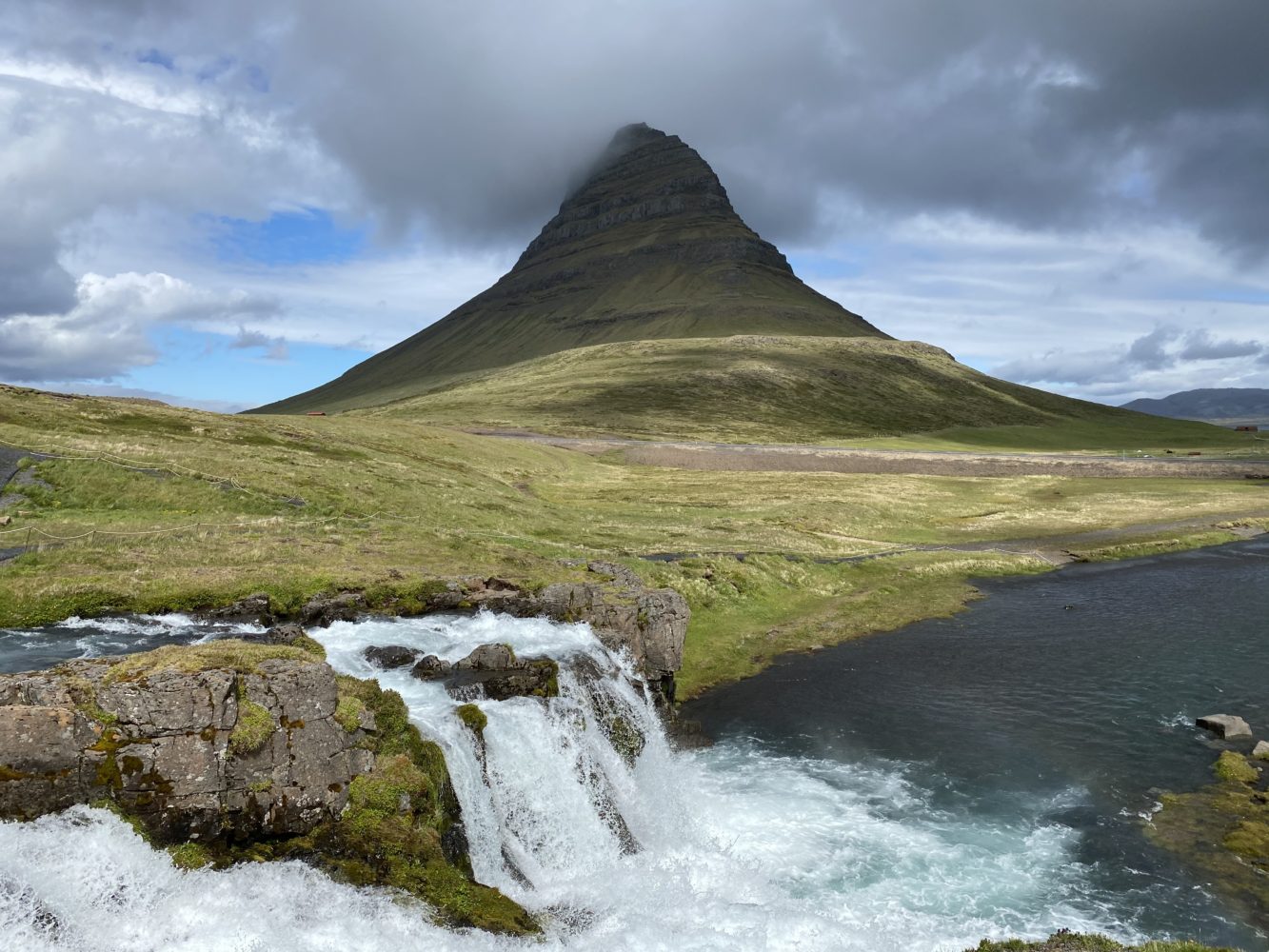
Kirkjufell as seen from its most famous angle, as the aptly named Kirkjufellsfoss waterfall looks on.
Some Background on Kirkjufell
Kirkjufell (which means “Church Mountain” in Icelandic) is a 1,519′ high mountain on the north coast of the Snæfellsnes Peninsula in Iceland. It is widely touted as the country’s most photographed peak. Looking up at it from the road, or from the waterfall at its foot, or from the nearby town of Grundarfjörður, there is little question as to why. The peak rises up in dramatic fashion right out of the ocean. Its steep slopes eventually give way to a lofty summit which splits the wide bay at its feet. Its symmetrical and ascending grassy sides make it look like a set piece straight out of a movie.
Or a TV show, to be more precise. Kirkjufell was featured prominently in some of the later seasons of Game of Thrones as “Arrowhead Mountain.” I’m not really sure what happened there in the show, but the peak is certainly a befitting choice for whatever GOT debauchery took place there.
Anyway, when Katie booked our Airbnb directly across from the peak, I knew months in advance I’d be climbing it. After we arrived and settled in, I got to stare out at its gorgeous west slopes for days on end, awaiting the chance to steal away for a few hours to get to the top.
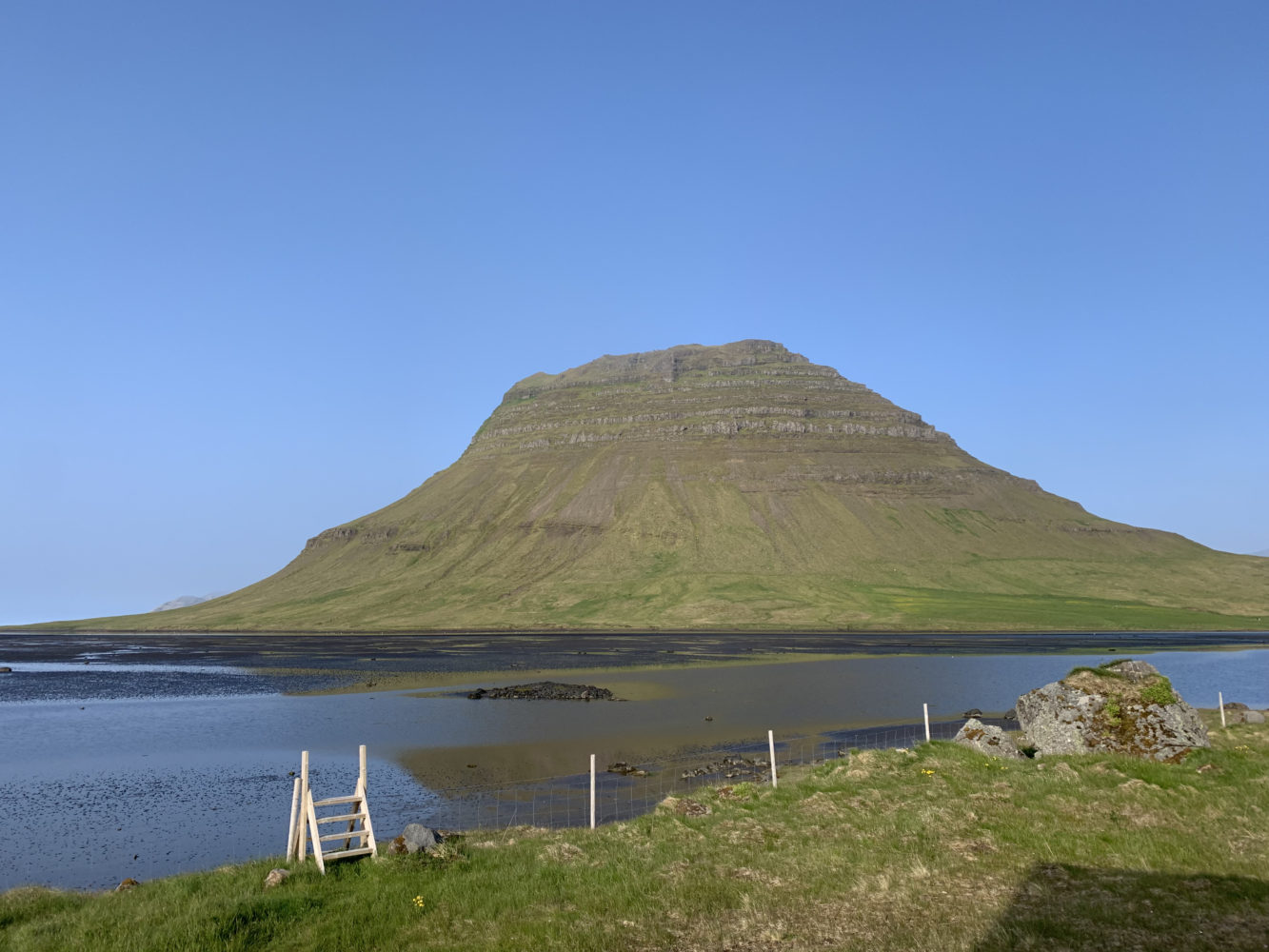
The view from the back porch of our Airbnb. Kirkjufell is a mere mile away across the inlet. Quite the find, this lodging spot. I can’t imagine too many places better than this to spend a week.
The only real complication was finding adequate beta for my outing. I knew the mountain was climbable on my own (although, I wasn’t 100% sure of this until I saw a soloist in profile along the ridge one evening), but detailed information online in English was somewhat difficult to come by. I did not ever find a proper a Kirkjufell trip report online (<— SEO shoutout for using that phrase in this TR). There was plenty of general info about the route and the mountain, but not too many detailed trip reports or stories. Hopefully this one will add a bit of useful beta to the pile.
The most useful sources of information I did find were the Strava tracks of people who had done this before, as well as some very informative comments in an All-Trails forum section about the mountain. All the rest were just snippets and comments from climbers in years past.
All my research eventually led me to three overarching conclusions:
- The climb is pretty dang sketchy, with a number of scrambly sections and dangerous grasses throughout.
- Every official site you can find strongly recommends a guide.
- This climb absolutely terrifies just about every person who has done it (or turned around trying).
The comments I came across from past climbers were especially entertaining. Some of my favorites included:
- “Death cliffs the whole way up, don’t need gear, not for those with fear of heights, the danger is real.”
- “Very hard didn’t make it all the way definitely need a rope harness mountain climbing gear”
- “Most rewarding hike (climb) of my life. Also potentially the hardest.”
- “Didn’t make the top— made it past the first ropes and then a little further. Minor panic attack given how steep the drop is. That’s unusual for me, but this is a bada$$ hike.”
I had to chuckle. Not to sound too much like an elitist asshole, but you gotta be at least a little bit skeptical of comments like these. I’m no stranger to over-dramatizing things via words myself, but still, it’s always hard to know how bad something actually is until you try it yourself. I’ve seen climbers nearly vomit out of fear on the Homestretch of Longs, for example, proving it’s all relative. So, I had to take all the fear-mongering in-stride.
Still, there was little doubt this would be a serious outing. I approached cautiously.
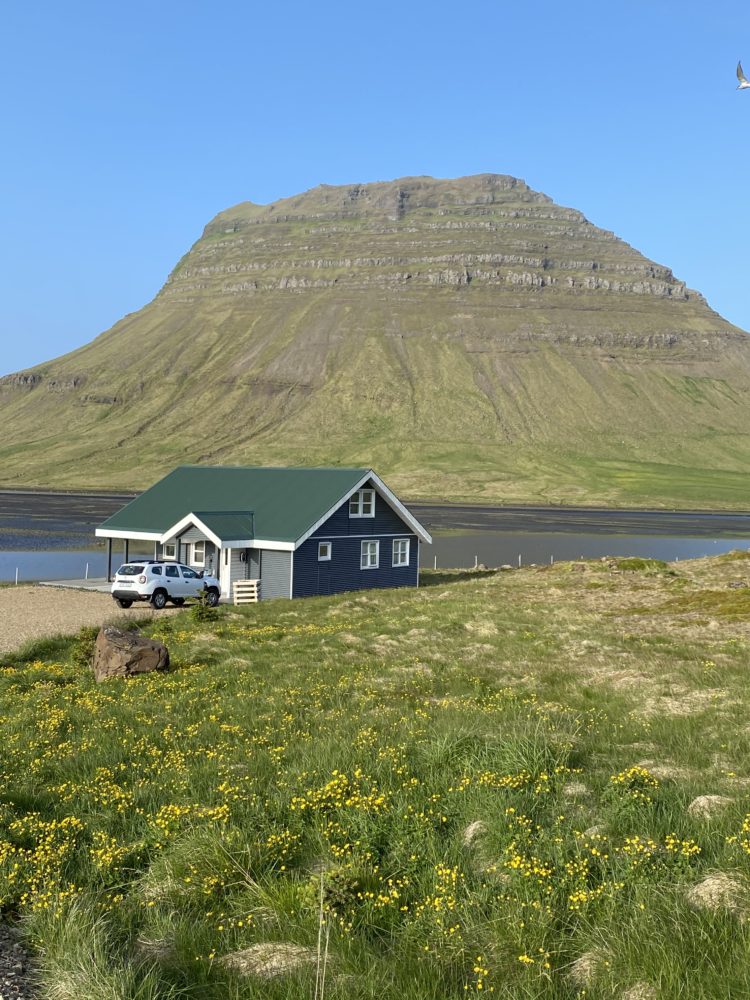
Just jog a mile out your front door, turn left, then head up the south ridge. Don’t forget to have fun.
My chance finally came one evening towards the tail end of our stay. We’d just had a big day out on the road, so with the boys vegging out on TV and Katie making an easy dinner, I had my opportunity to step out for a few hours. I was still in recovery mode coming off of the San Juan Solstice, so I opted for an easy jog along the highway for the mile or so to the foot of the mountain.
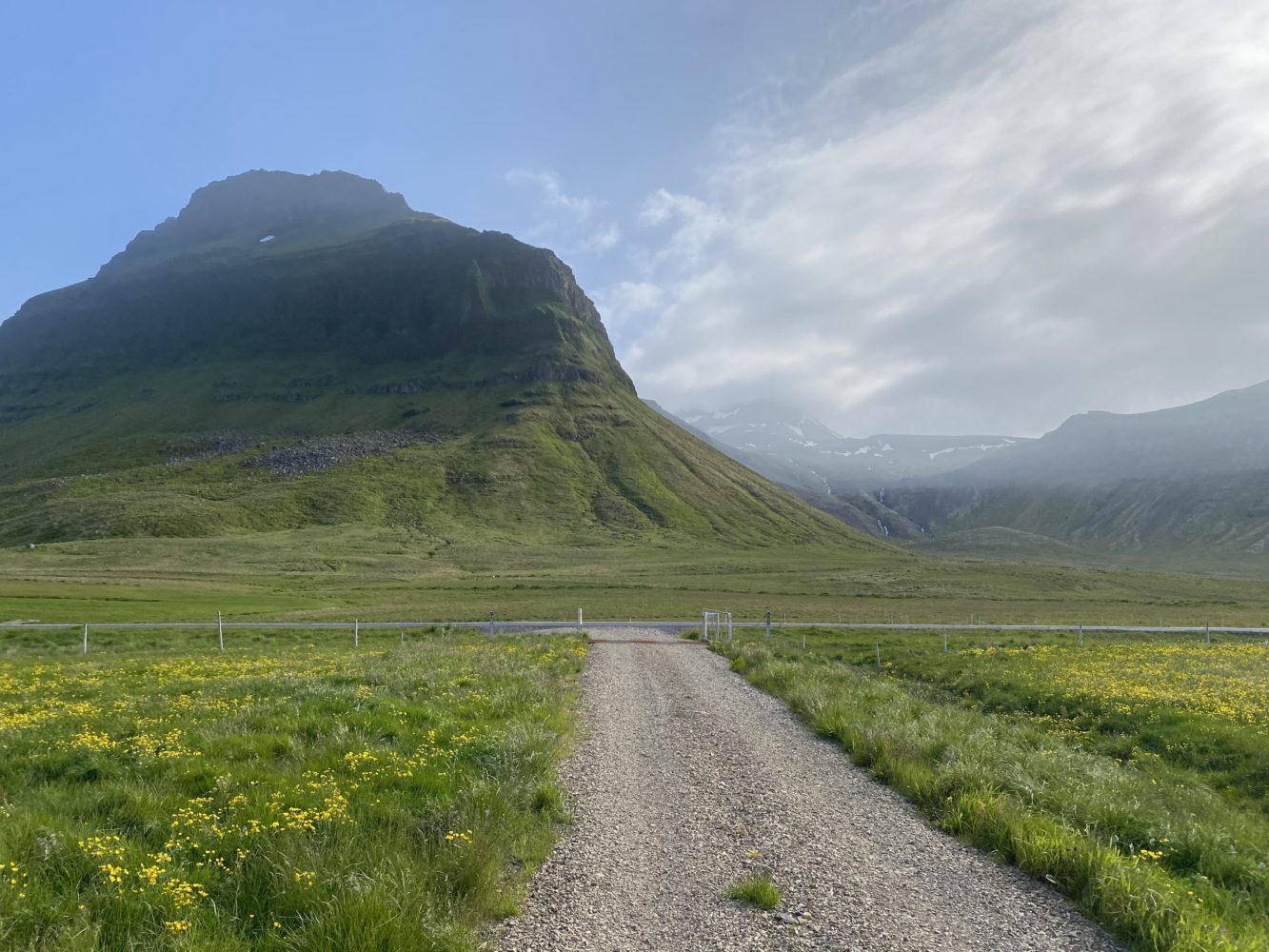
Looking out our driveway. There’s always something pretty special about door-to-door outings in the mountains like this one.
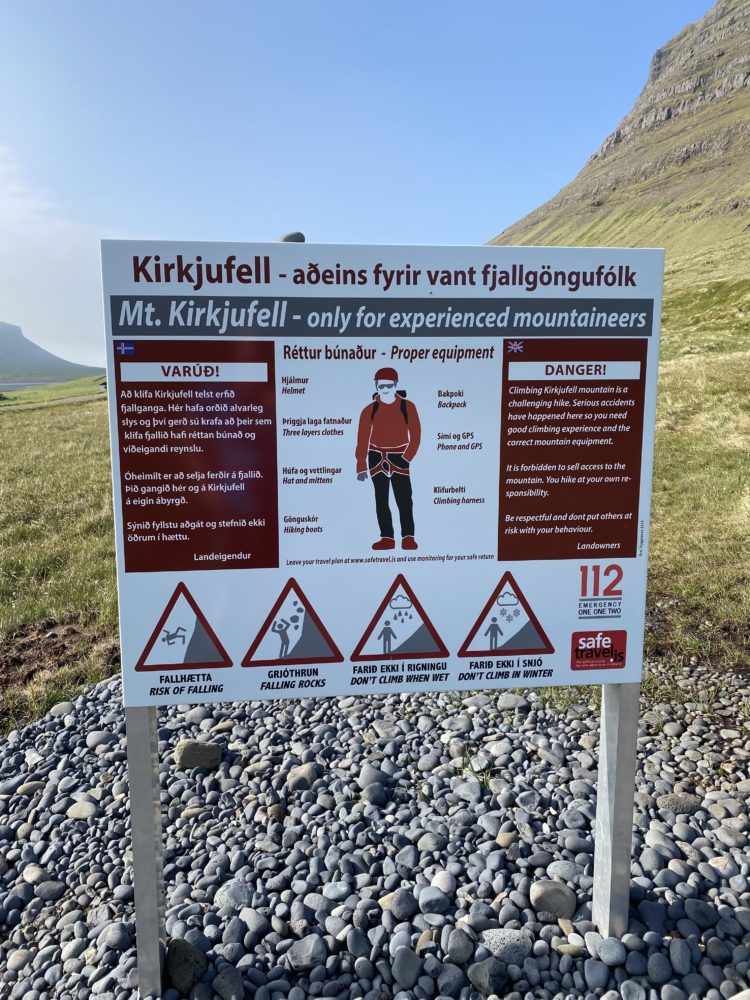
The ‘welcome to Kirkjufell’ sign confirmed my online research. This one deserves all the respect you can give it.
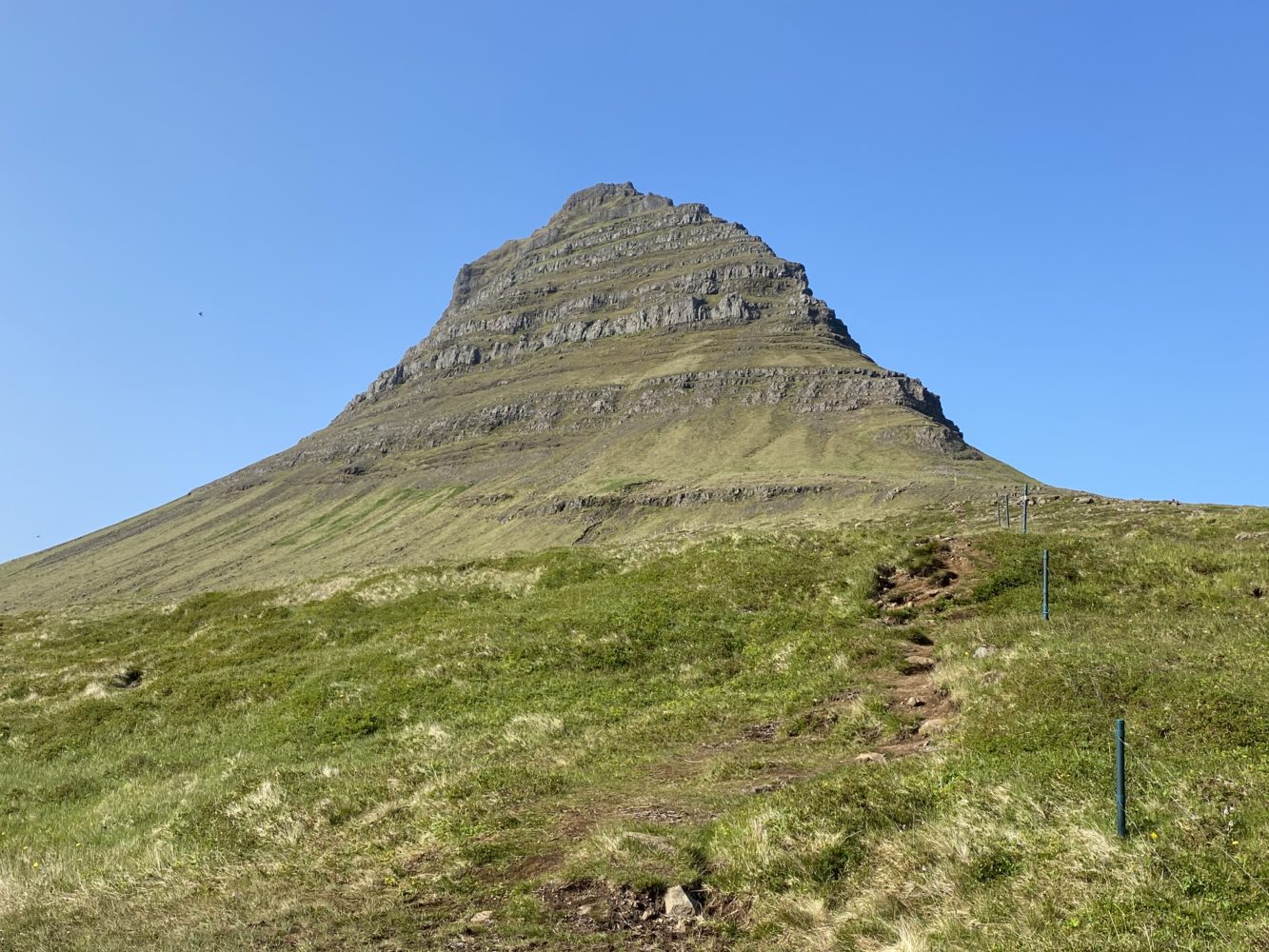
Off the highway and at the proper foot of the mountain now. Kirkjufell’s entire South ridge route is in view.
To steal from another poster’s characterization, the south ridge route can be though of as three distinct sections:
- A hike up steep grassy slopes.
- A scramble with increasing exposure.
- A climb with legitimate rock climbing and three sections of fixed ropes.
Thinking of it this way was wildly helpful to me, so I’ll outline my day in the same way.
Section #1 – The Hike:
BETA: The start of the route ascends up the gentle south ridge of the mountain. There is an excellent trail the whole way which is easy to follow and offers no real challenges other than dodging sheep poo and the occasional puddle along the way. The trail gets steeper and steeper as you go, but for the 3/4 of a mile or so it’s purely an exercise in cardio and enjoying some amazing views.
It was impossible not to love this section. With the summer solstice just a few weeks behind, the sun never set during our time in Iceland. This meant I had incredible lighting and views for my evening ascent. Going higher and higher provided nothing but increasingly incredible views. What an evening!
Towards the end of the hiking I finally encountered my first other people. A duo of Canadians helped point me in the right direction (i.e. the start of the scramble gully). I asked how their climb was and they reported stopping at the first ropes. “It looked pretty dang scary” they reported back. They looked more than happy to be going down, which only heightened my anxiety.
Still, I didn’t have to do anything I didn’t want to, so I thanked them for the directions and pressed onwards and upwards.
Section #2 – The Scramble
BETA: Eventually the trail gets steep enough that some real exposure comes into play. As does route finding. A few mild rock steps start to punctuate the path up before the it turns out onto the east face. The key is to find a gully which requires a ~150 scramble up. The gully is a mix of grasses, short trail segments, loose rock, and legitimate class 3 scrambling. A beautiful bench awaits those who make it that far. Beyond that is a series of increasingly exposed and airy trail segments. Nothing too terrible to this point, although any kind of moisture or wetness would increase the danger considerably. Good route finding is also key here. I never strayed from the well-stablished path, which wasn’t always obvious to follow. Pay attention to all the switchbacks.
The biggest thing that stood out to me on this section was all the grass. Thick, slippery tussocks surrounded the trail on all sides – classic Iceland. Although the face wasn’t too sheer quite yet, the exposure got increasingly bigger and bigger as these grassy slopes beneath the trail only steepened. They freaked me out due to their slide potential. One slip on one of these and it wouldn’t be easy to stay upright. Thankfully it was pretty dry. Had it been raining, snowing, or even mildly wet, this entire climb would be suicidal thanks to these slippery grasses.
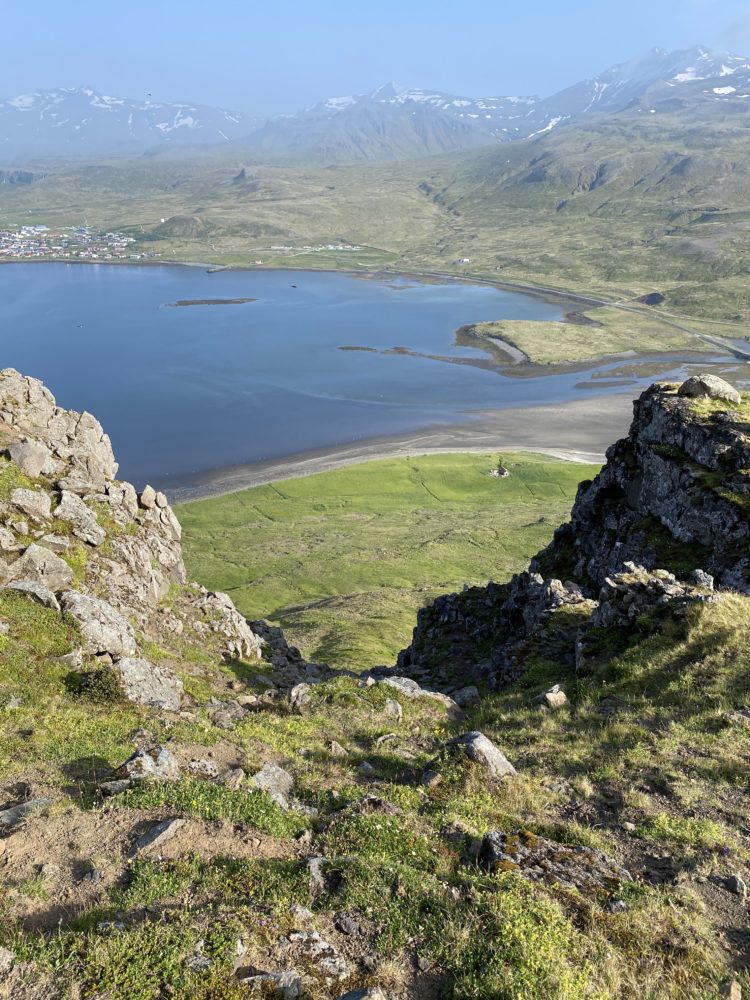
I guess I didn’t actually get a photo from within the Class 3 gully itself. This is looking back down from the top of it.
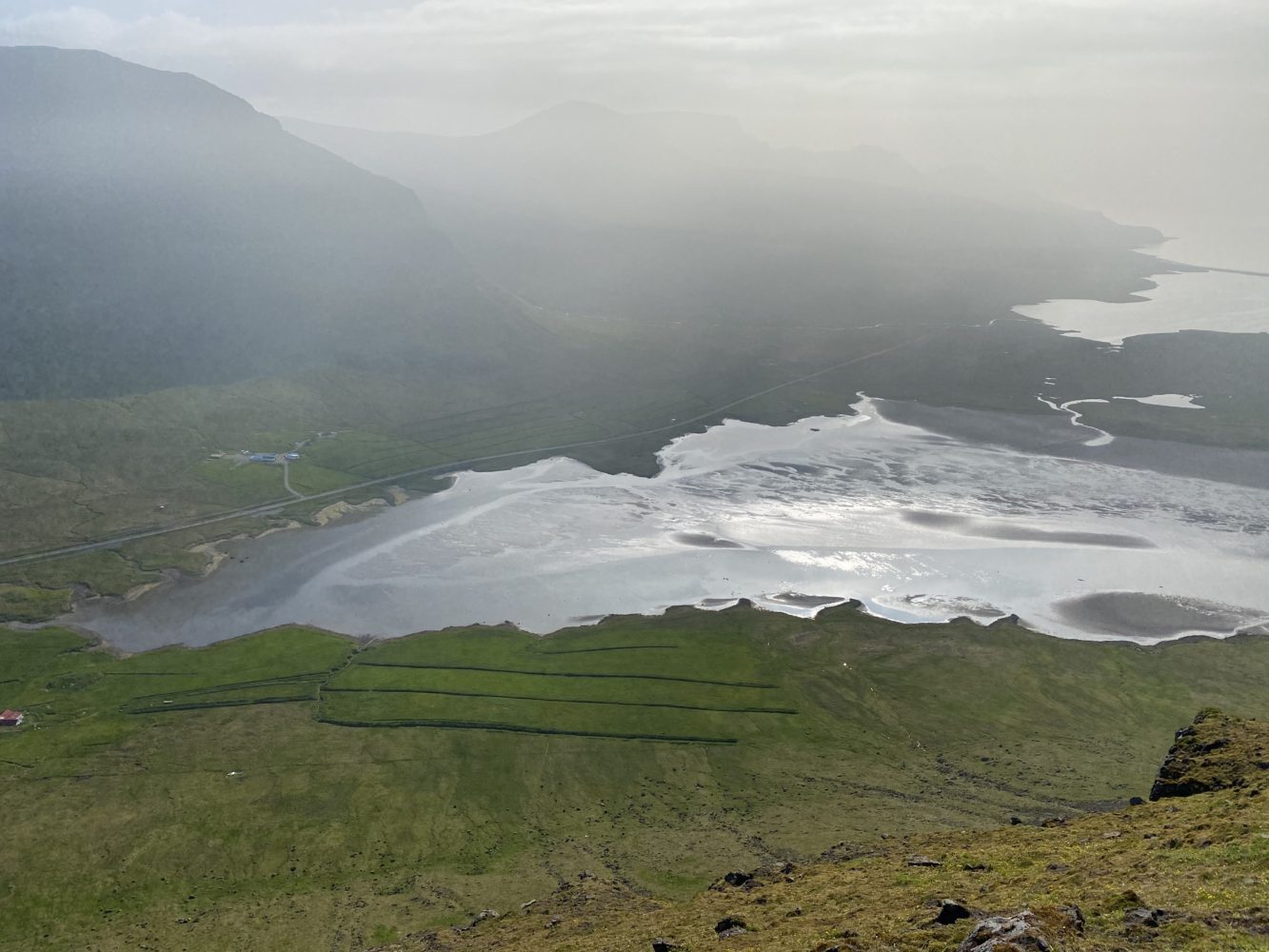
Looking back down towards the shallow bay in front of our Airbnb. Hard to see, but our house was on the water, just past the finger in the middle of the shoreline. (Click to enlarge)
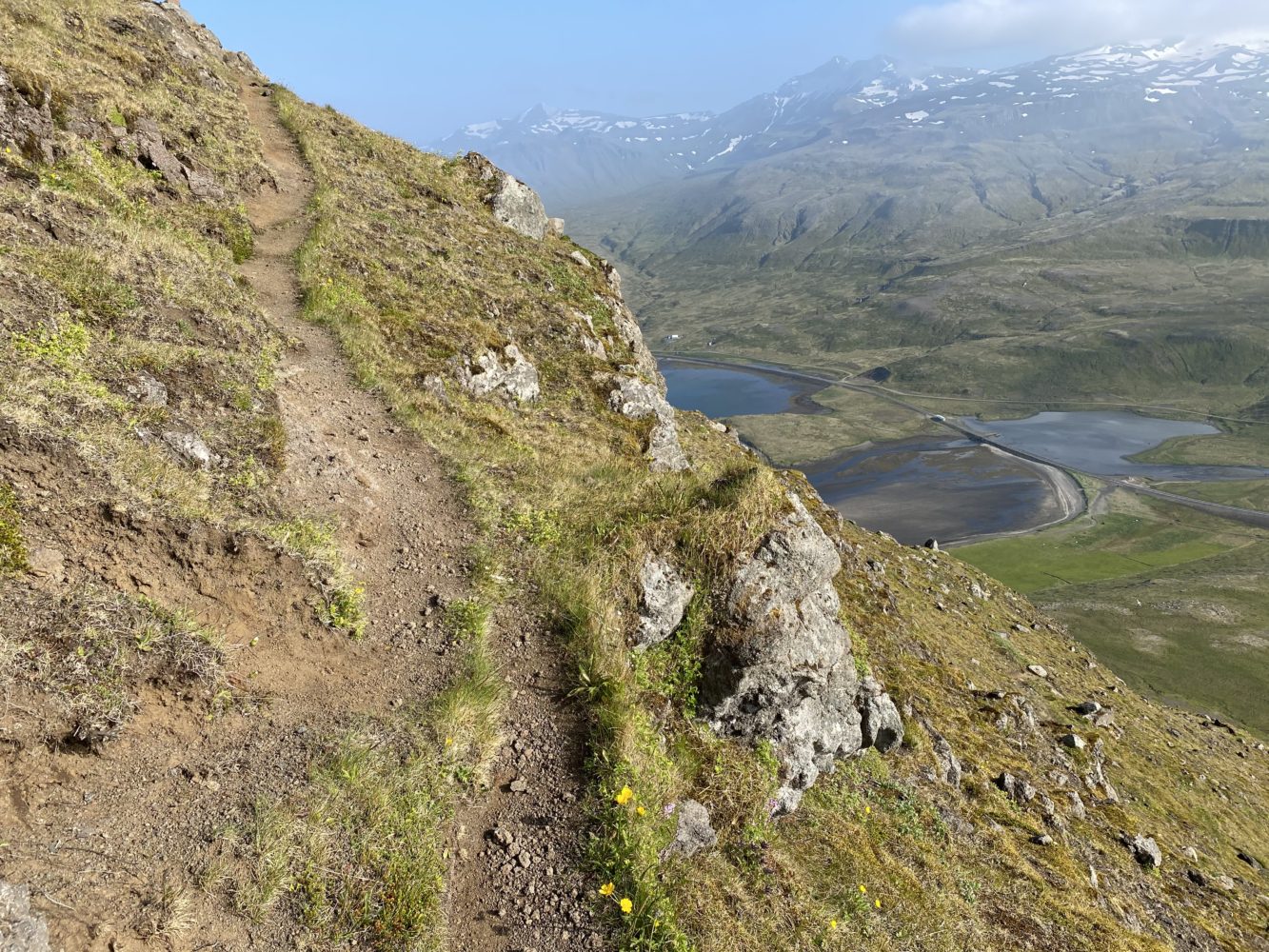
The most useful tool the whole way was the Strava route-tracker, actually. I continually checked my position against other’s from the past to ensure I was staying on-route.
Section #3 – The Climb
BETA: The final section of the climb involves legitimate rock climbing. Three class 5 sections are present, with fixed ropes on each. The first is a 30 foot vertical headwall. The second is very steep rock/grass slope, and the third is another 30 foot vertical section that guards the summit. The ropes should be taken with extreme suspicion at best. All the while, the exposure increases significantly, with spots of absolutely fantastic vertical relief falling off in several directions. For anyone attempting this, remember that getting down this section is far more difficult and dangerous than going up. Both are thrilling and wild!
All along I knew I was looking for three pitches of fixed ropes. This is where the real adventure would begin. But I wasn’t sure what they would look like, or where they would come. The answer could not have been more obvious. Or intimidating.
I finally reached the first rope and saw it went straight up a vertical face of 30 feet. It looked every bit the low 5th class pitch it was purported to be. Bt at the same time, the rock appeared to be very solid. And there was the matter of that thick fixed rope which hung down the center. It was nice to see, but I had to ask myself, “Can you climb both up and down that without it?”
Up for sure. Down, probably. I gave a few very hard pulls to test it out, as I would with the others. I essentially weighted it fully and even jumped off a bit to see how it would do. Just fine, it seemed. It would sure be a nice crutch to have, but I resolved to not use it at all on the way up.
As I was pondering all this I noticed another party also nervously eyeing the wall. A Slovenian couple asked me if I was going up. “I think so,” I replied. I wasn’t too happy to have to climb this with an audience, but in retrospect, it was also the nice little nudge I needed to get moving upwards. At least someone would be there if I bit it here.
So, I gathered some chutzpah and climbed up into the unknown.
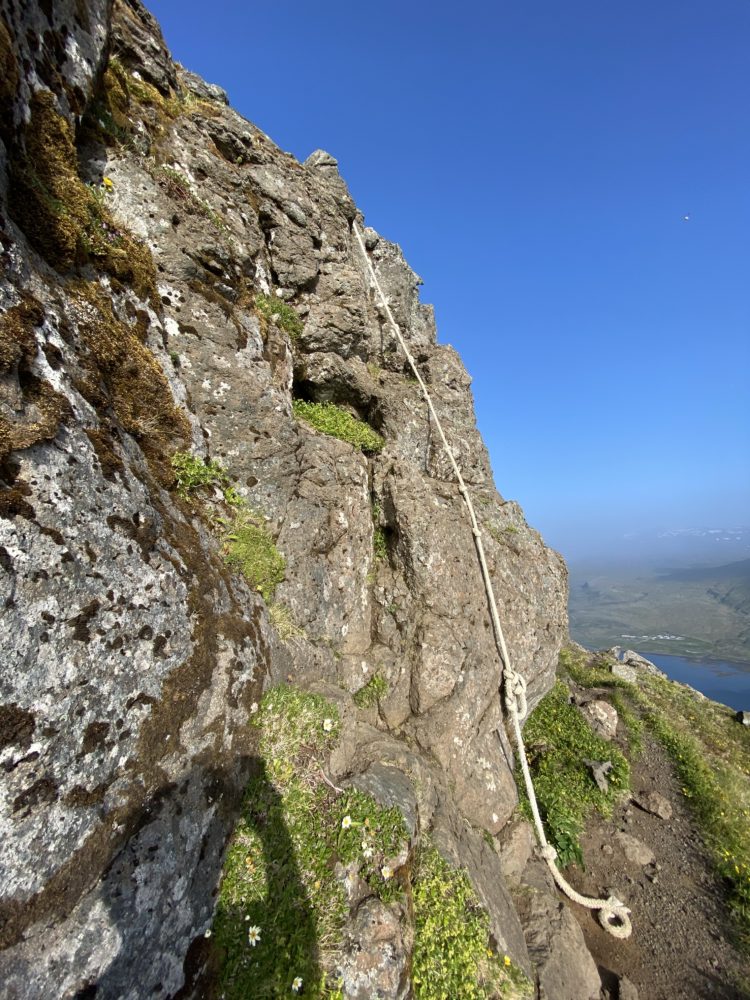
The first fixed rope. I’d be lying if I said preparing for this pitch didn’t give me more than my fair share of anxiety. However, my approach on the way up was to essentially avoid it as much as possible. The climbing wasn’t too difficult, but it wasn’t too easy either. Regardless, I wasn’t about to trust the rope until I could inspect the anchors at the top.
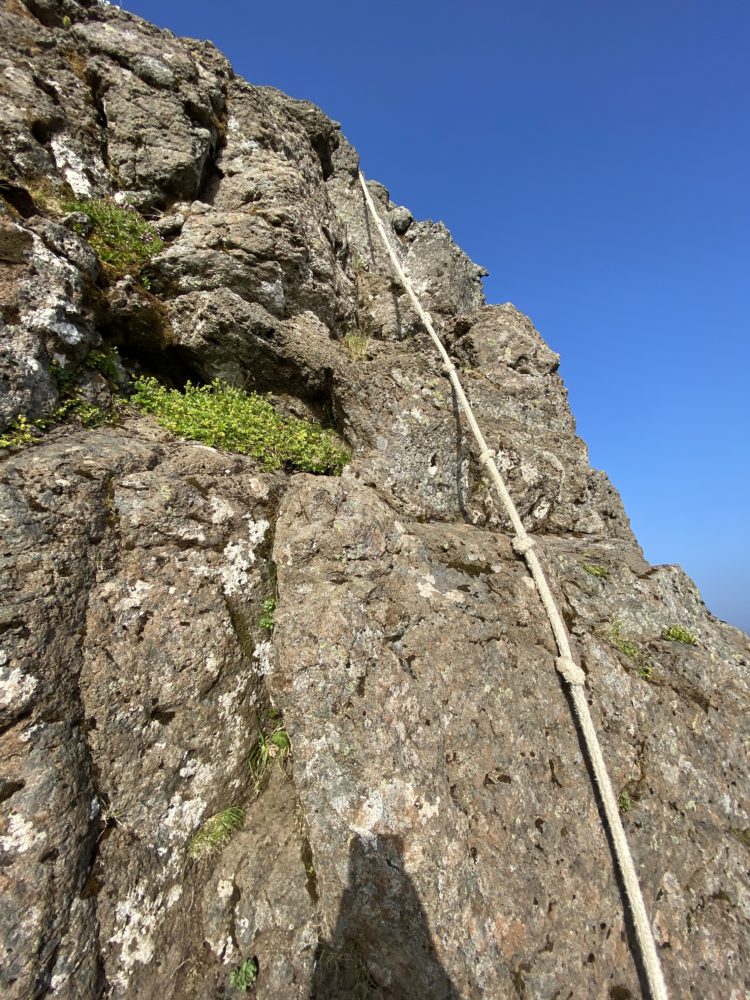
Another closer view of the rope. It was one of those shipping ropes commonly used at all the towns around Kirkjufell. I knew the rope itself was more than safe to use, but I had no idea about the anchors. Maybe it was stupid to go up without knowing, but I figured I could always jerry-rig a new one if worse came to worse.
I felt a wave of relief to get up this fist pitch. Followed quickly by the anxiety of knowing I’d have to go back down it. I immediately went to the anchors to see how they fared. They were in really good shape, actually. Whoever had tied this knew what they were doing. Fixed to a solid boulder that managed any potential cutting or fraying well, they looked good. It was still sketchy AF, but it could have been way worse, I figured. Remnants of old ropes bore witness to that. Still, I wasn’t too keen to rely on it if I didn’t have to.
With that pitch behind me, I pushed on ahead with a sense of urgency. Any stalling and I knew I would just freak myself out. I kept moving. As I did, I was able to follow good trails again, but with absolutely wild exposure on either side. When I turned the corner out onto the most sheer east face again for the second fixed rope, I was blown away by the relief. 1,300 feet straight down to the water. Wow.
The second rope segment was, by far, the sketchiest of the entire climb, IMO. It ascended a very, very steep grassy/dirt filled slope up to another bench. To a non-climber, this might have felt the best of the three, actually, since it wasn’t vertical and it would have been very easy to have just hauled yourself up the rope the whole way.
But to me, I’d take solid rock over this mess any day. A steep slope that ended in a 1,000+ cliff at the bottom was not very fun.
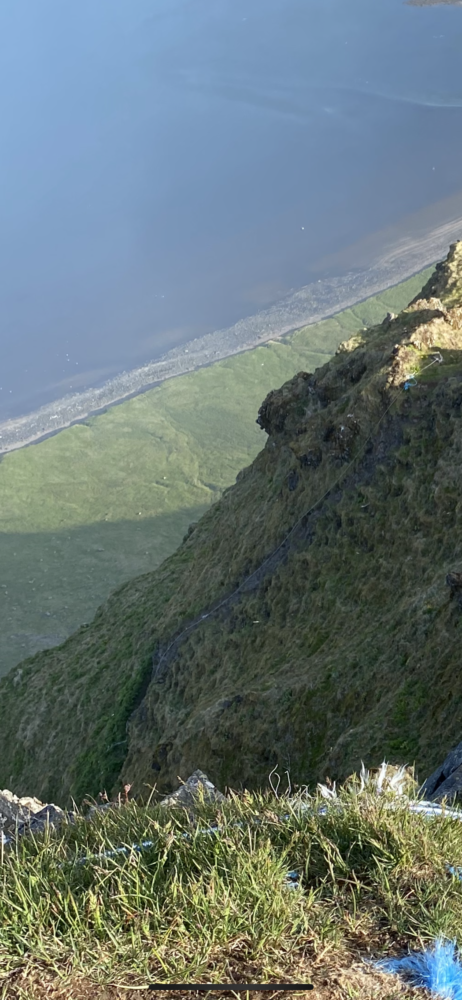
I didn’t get a great photos of the second rope/trail segment, but this gives a decent idea. Look at the trail segment in the background. Not the most relaxing scrambling I’ve done.
The only saving grace was the climbing wasn’t too hard. And the rope was actually somewhat useful here. Because it wasn’t vertical, I could pull on it to help steady the ascent in places. I figured if it blew, it wasn’t steep enough to send me going. Still, I did my best to essentially never really weight it (beyond my tests at the bottom). I kept three points of contact on solid placements at all times, only tugging for relief where needed. It did help.
I was damn thankful to reach the top of the pitch. Even more so to see that the anchor was yet again in really good shape. It would have to be, as there was no feasible way to safely down climb this section without it helping…
Just past the second rope, the summit loomed. Soaring views in almost every direction set a brilliant scene, but it wasn’t time to enjoy that yet. The top was guarded by a final summit block and the third roped section. It looked similar to the first, but less sheer and with two ropes this time. All class 5 still, but the climbing here looked a lot more like fun and lot less like terror. I made quick work of it, feeling good about getting down regardless of the ropes.
The summit of Kirkjufell was an all-timer. Ocean on three sides, sweeping mountains to the other, and pure vertical relief all around. A quarter-mile stretch of flat trail ran along the knife’s edge of the nearly sheer spine. I switched back to a jog as I raced to the end, savoring every step.

Summit pano. Looking back on the long ridge. I was able to give Katie and the boys a call from here. They could see me traverse across from far, far below. (Click to enlarge)
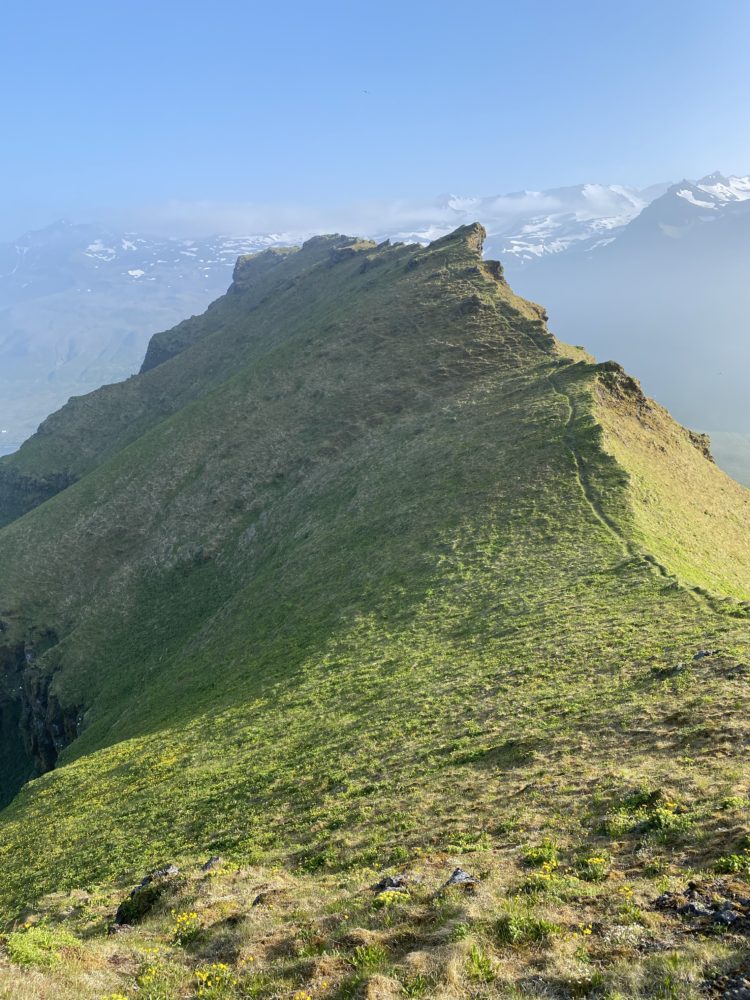
The slopes off each side weren’t strictly vertical, but had a hundred or so feet of steep grassy slopes before yielding to the cliffs beyond. I found this to be scarier, actually, as the mind envisioned what it would be like to take a ride on one of these. No thanks.
My only regret from Kirkjufell was not taking more time to enjoy the summit. I was feeling super anxious about the down climbs to come, so I didn’t quite take the time to relax and enjoy it like I should have. I was just ready to be out of the danger zone.
I’m thankful to report that getting down was not quite as bad as I had anticipated. A thorough inspection of each rope led me to believe I could use them for the assist on the way down. I still avoided weighting them at any point, but it was to have the steadying factor there as I scrambled back down. By the time I got the bottom of the first vertical pitch, a wave of relief finally washed over me. What a route!
With the worst of it behind me, I was now able to run back down the rest. My Slovenian friends, who had turned back after the first rope, assumed I was a mad-man as I went dashing by. A group of American bros thought more or less the same, as they saw me blitzing down the scramble gully. I wonder if other climbers also feel a blitz of adrenaline kick in after finally getting relief from all the really scary sections of a climb? Mine certainly powered me all the way back down to the highway.
From there, it was just one final push to make it home.
By the time I got back to our Airbnb, a flood of relief and gratitude came over me. I recounted my tale to the family, ate about 3,000 calories, and sought to enjoy the climb in the best way possible: by cracking a beer or two (or three or four) and looking back up at my summit.
Thanks for reading if you did. Happy climbing!

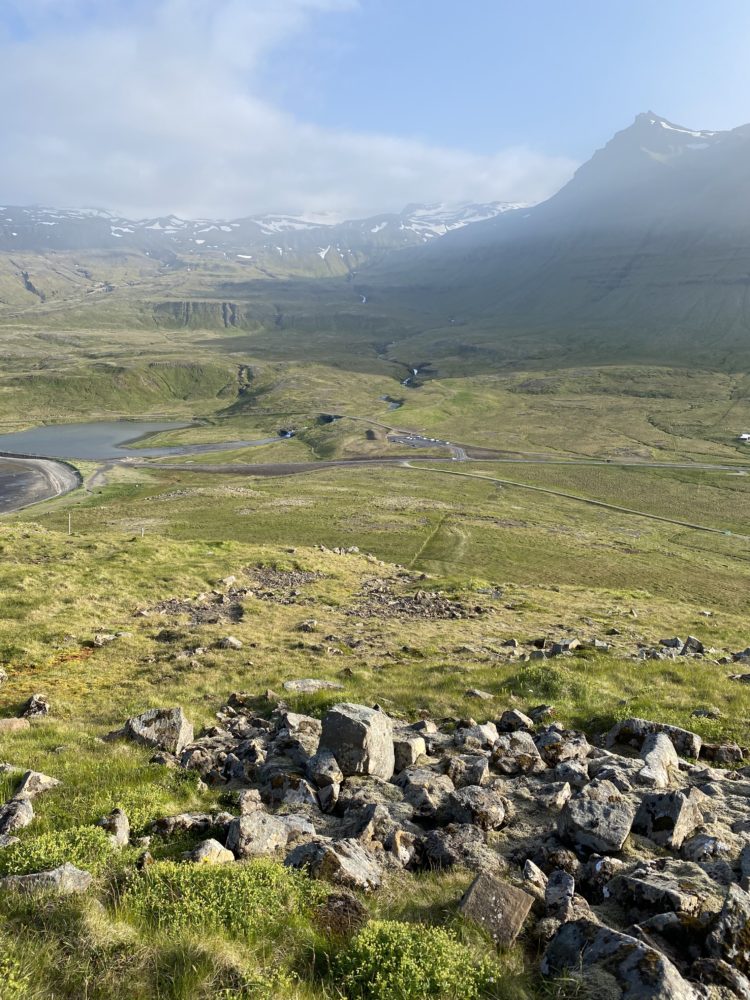
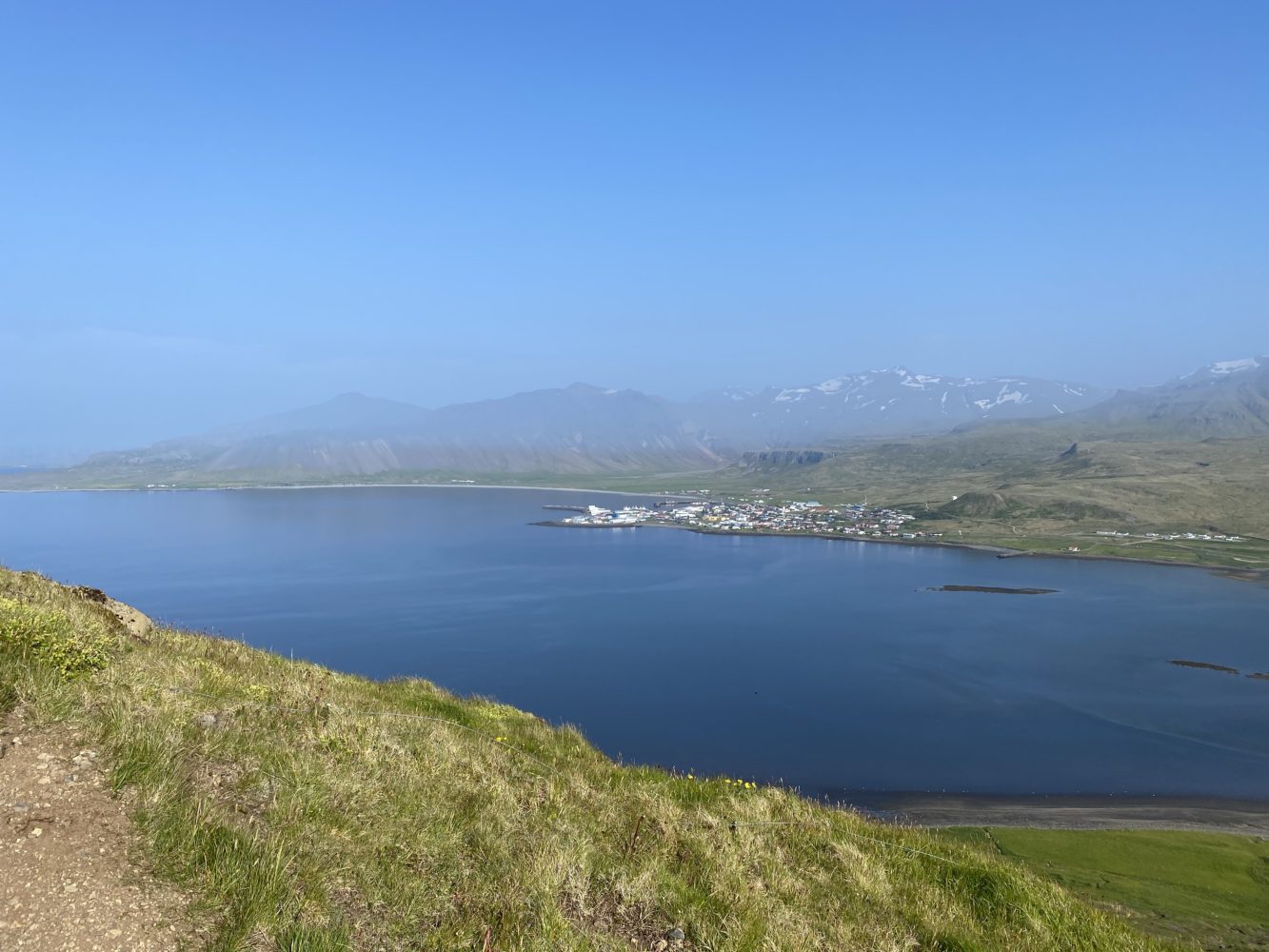
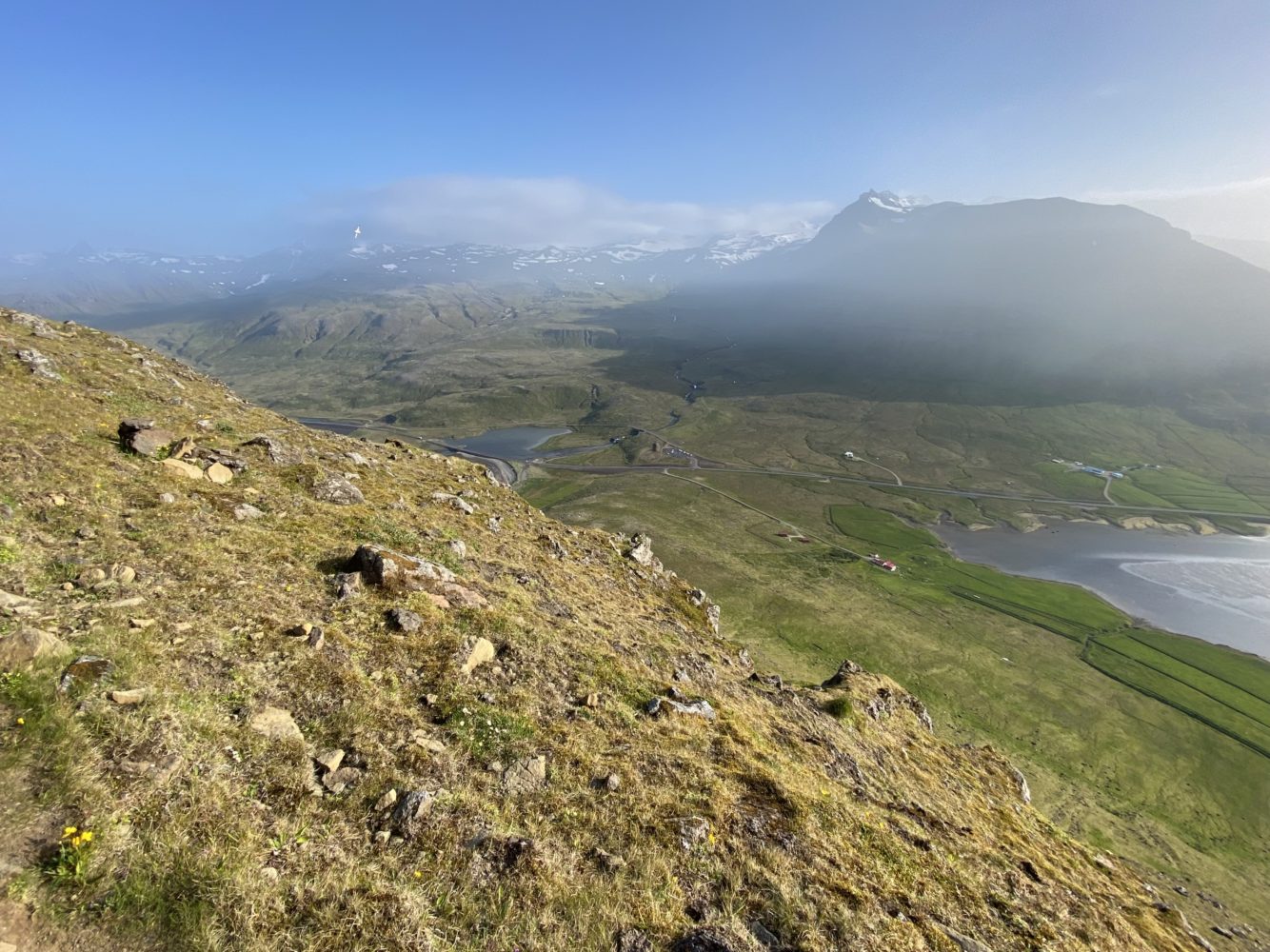
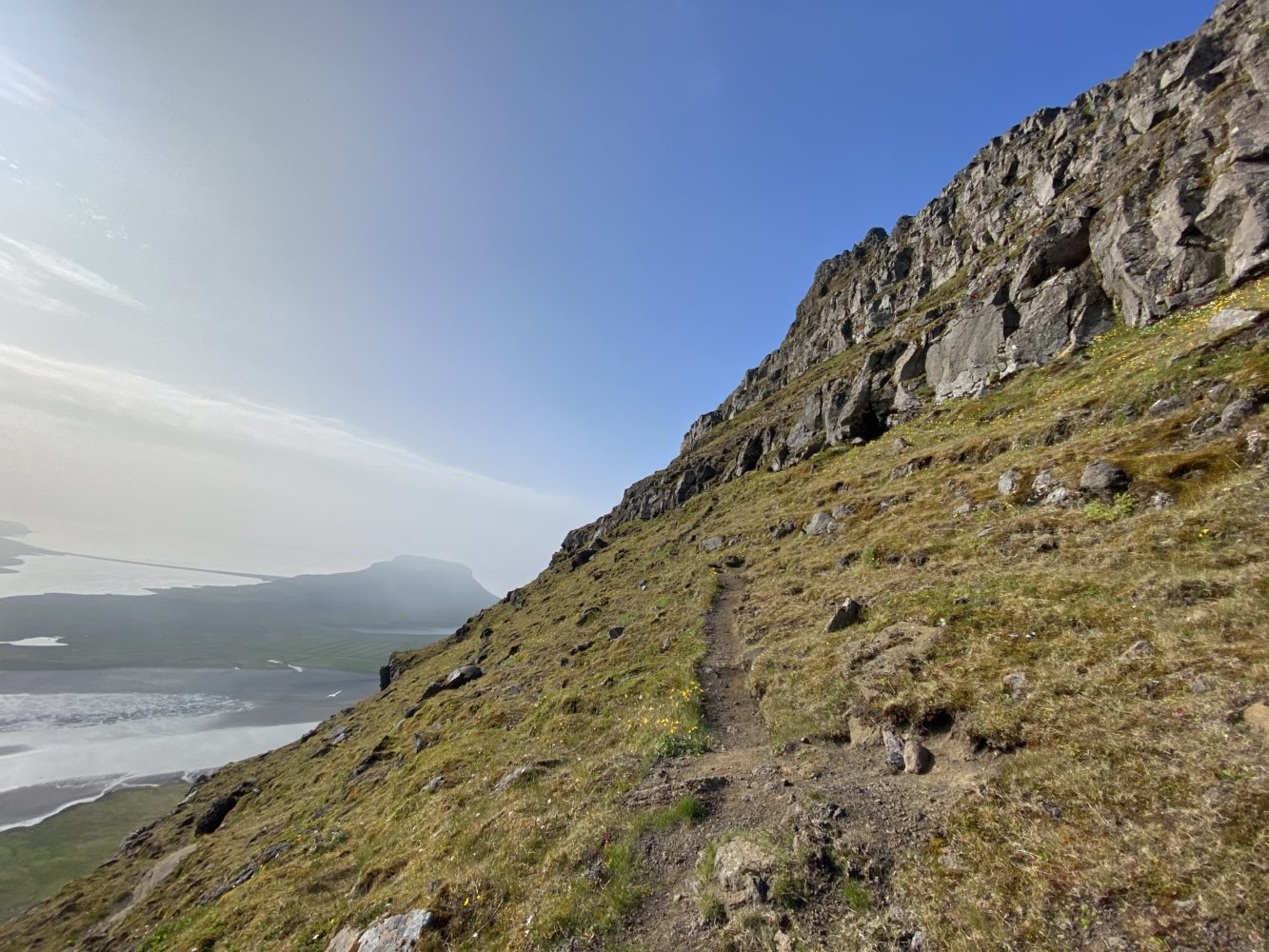
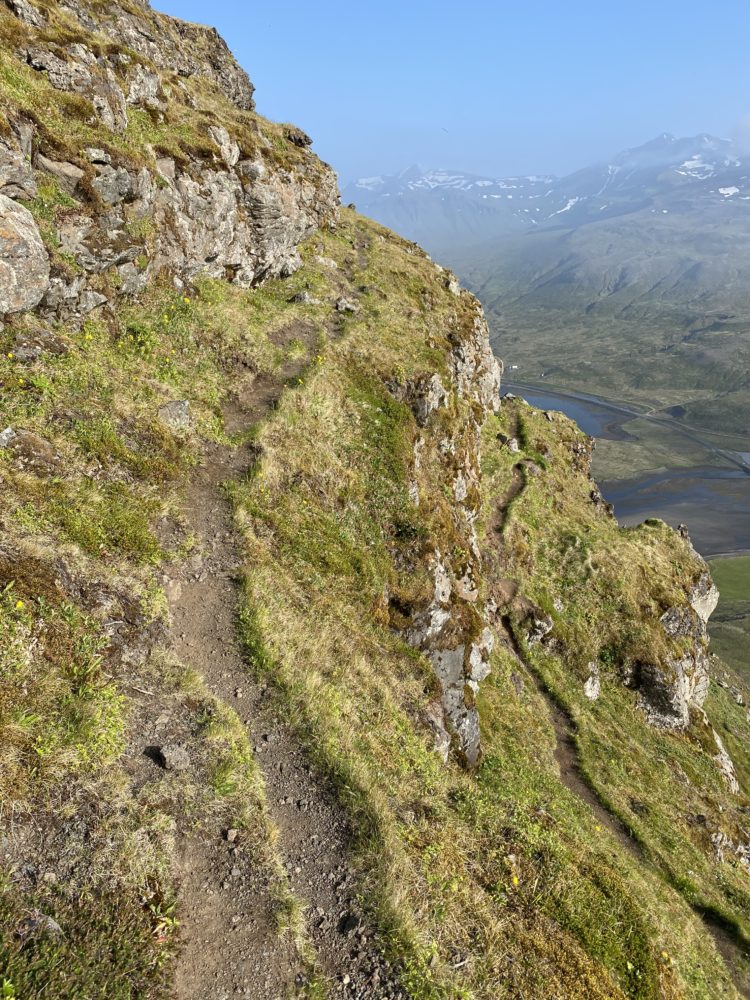
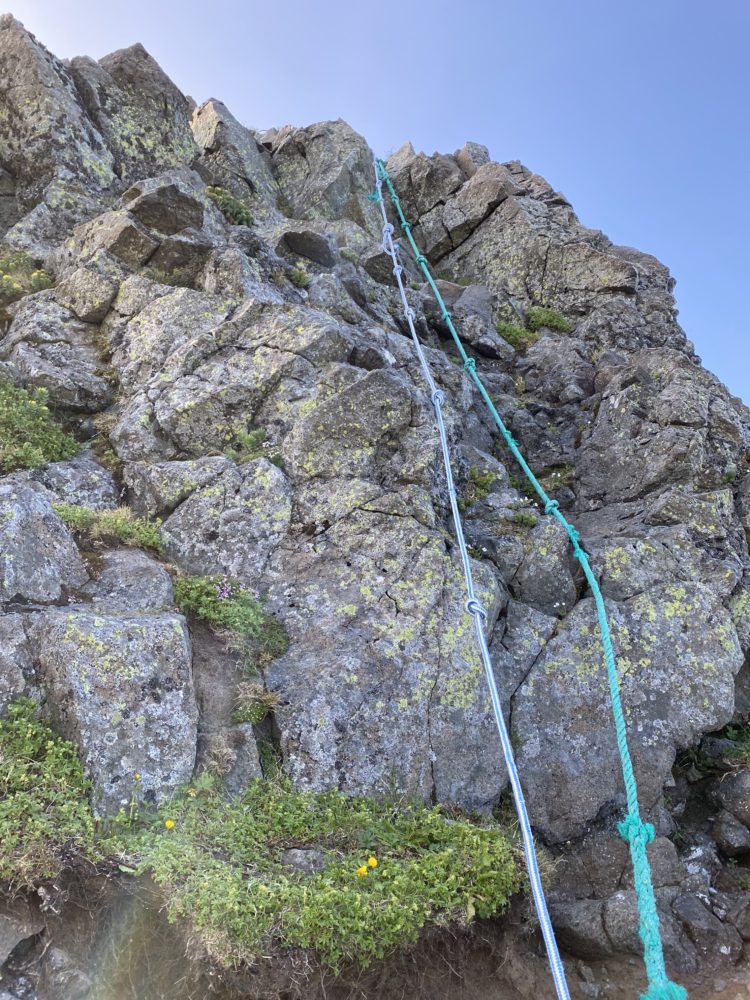
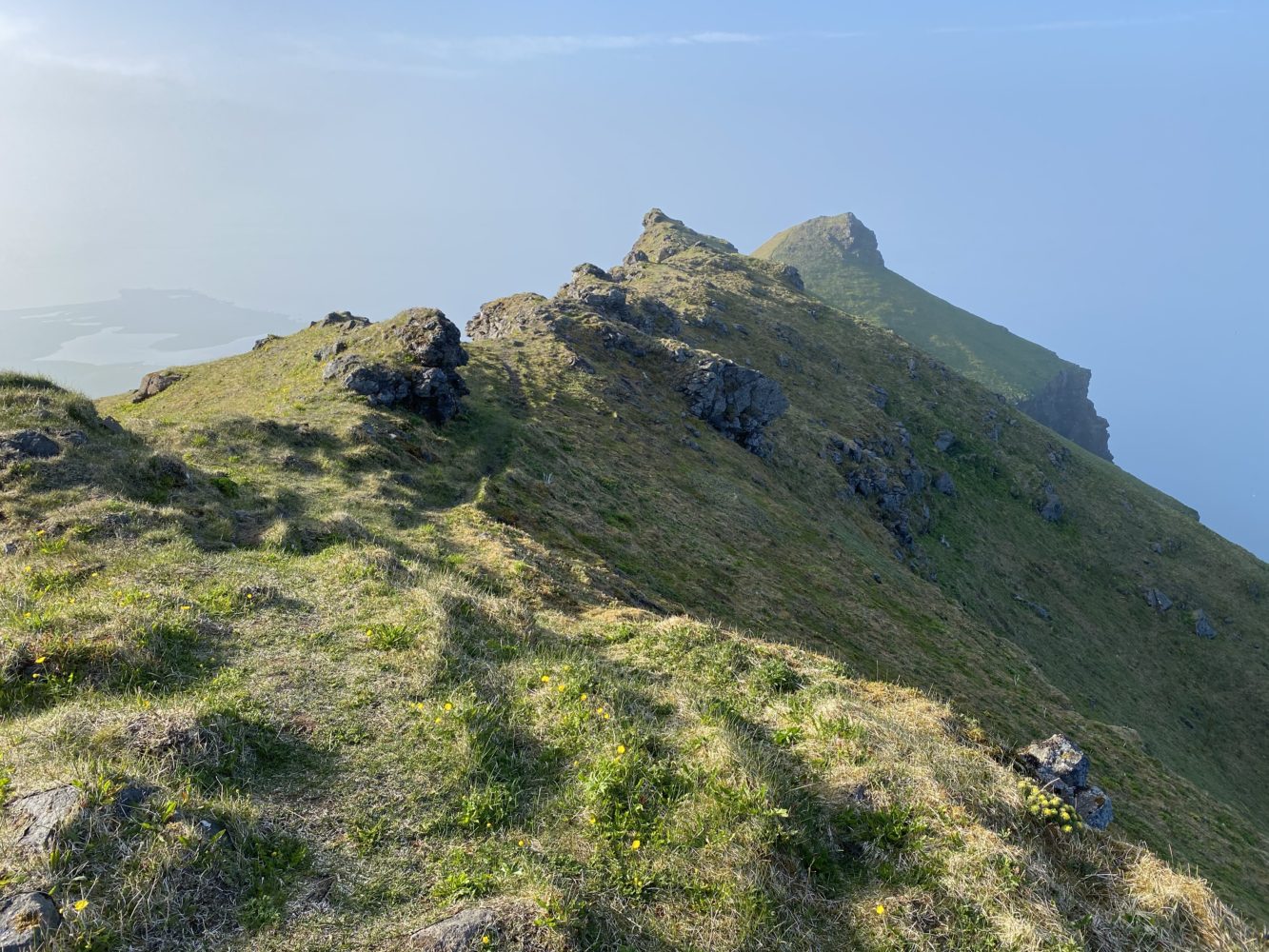
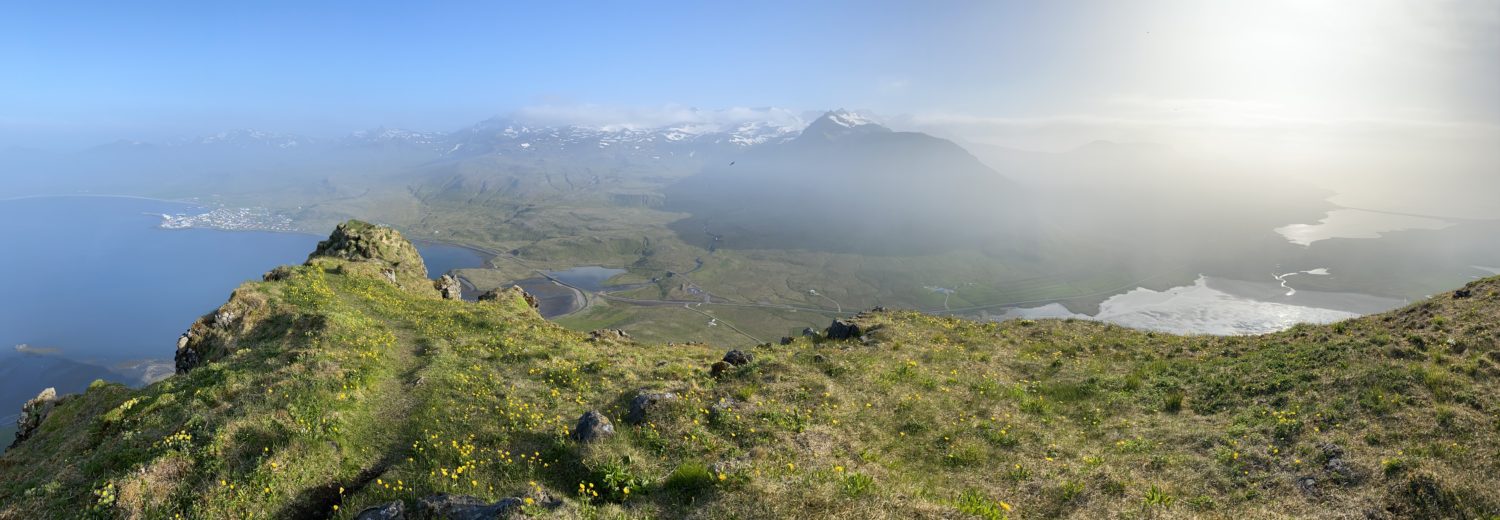
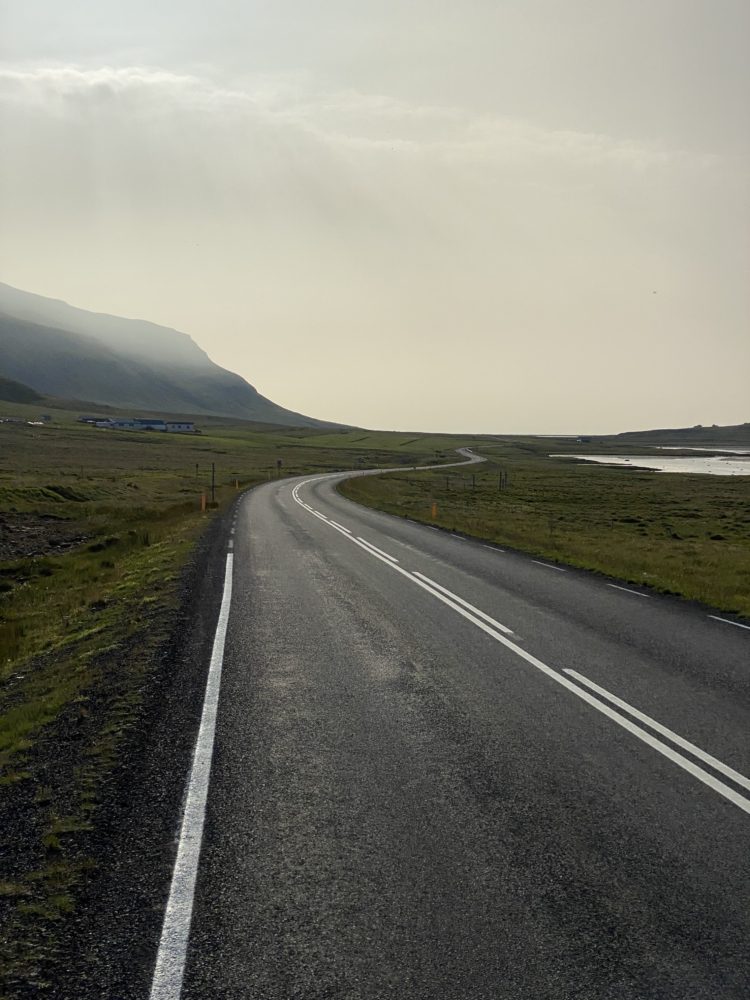
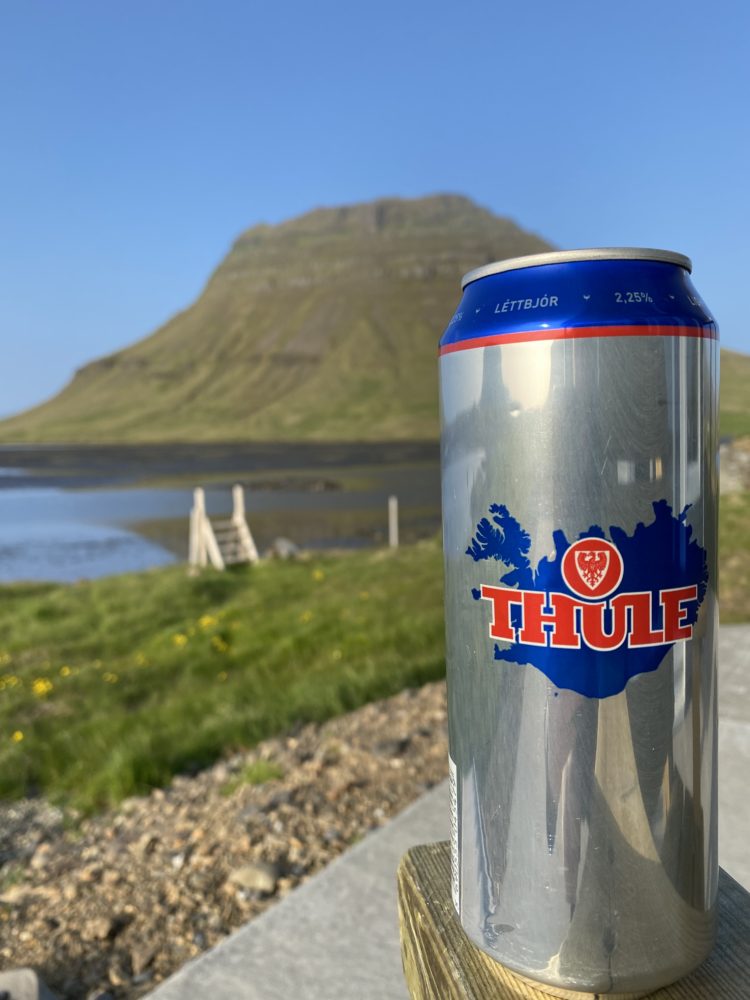
Nice man! Looks like a neat summit ridge and climb. If we ever find ourselves in Iceland again I’ll be throwing this one on the list…
Do it! I think you and Miller would especially like this one. One-of-a-kind, that’s for sure.
Damn, that looks spicy! And wow…that is quite the Airbnb find!
Ya man. One of the best of all time. We splurged a bit, but it was worth every penny. That’s my new philosophy for these, I think. I rarely regret spending the extra $$ for a special/unique spot.
Sweet little peak. Glad you got it, and it wasn’t just a backdrop for your lodging.
Thanks, Steve. Yes – very cool to walk out the front door and knock it off!